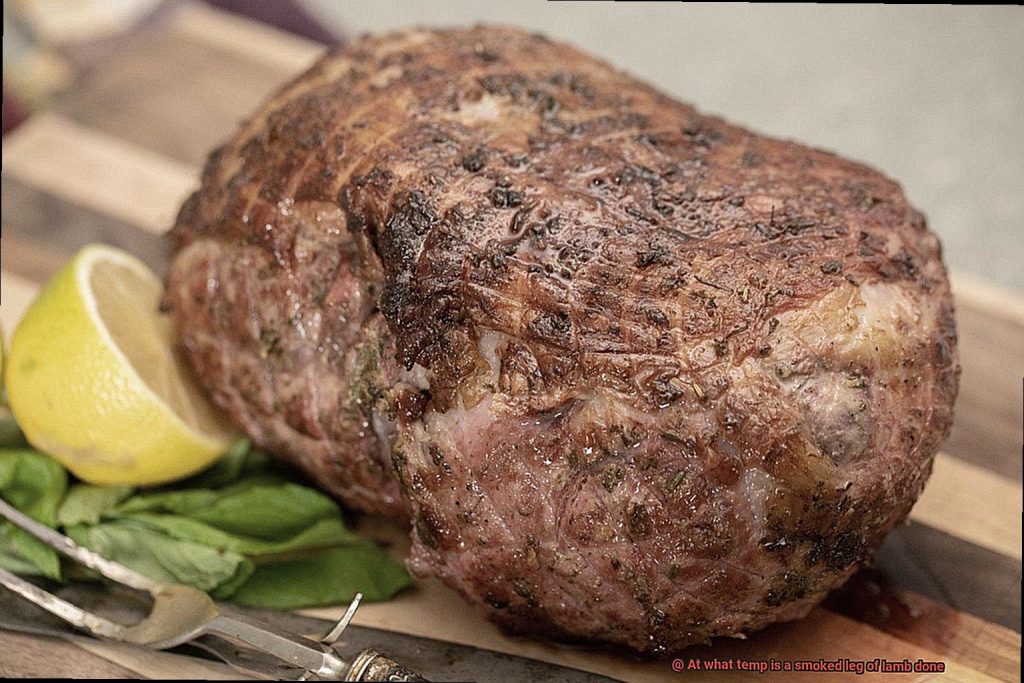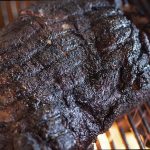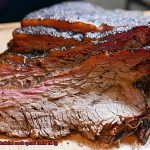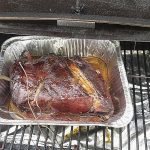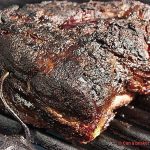Smoking a leg of lamb is like setting off fireworks in your mouth. The intoxicating aroma, the melt-in-your-mouth tenderness, and the explosion of flavors that dance on your taste buds create a culinary masterpiece that’s hard to top. But here’s the million-dollar question: what’s the secret to achieving perfectly smoked lamb? It all comes down to nailing the temperature.
In the world of barbecue enthusiasts, there’s an ongoing debate about the ideal temperature for smoking a leg of lamb. While personal preference plays a role, most experts agree that hitting around 225°F to 250°F (107°C to 121°C) is where magic happens.
Why this range, you ask? Well, cooking lamb at lower temperatures lets the smoke work its magic slowly, infusing deep, smoky flavors into every nook and cranny. Plus, the gentle heat breaks down those pesky connective tissues while keeping things moist and juicy inside.
But if you’re after a little crunch on the outside while maintaining succulence within, cranking up the temperature towards the higher end can give your lamb a tantalizing crust without sacrificing its tender insides. Finding that perfect balance becomes an art form in itself.
Timing is everything on this epic cooking journey too. Typically, it takes about three to four hours for a smoked leg of lamb to reach medium-rare doneness at an internal temperature of 135°F (57°C). Just remember to rely on a trusty meat thermometer for accuracy because precision is key when it comes to pleasing your taste buds and those lucky enough to enjoy your culinary creations.
So whether you’re hosting a backyard barbecue or experimenting with new flavors in your pellet smoker, smoking a leg of lamb at just the right temperature will transport you and your guests into gustatory bliss. Prepare to be amazed as we dive deep into the mesmerizing world of smoked leg of lamb. Join us on this adventure as we explore techniques, seasoning options, and mouthwatering recipes that will elevate your smoking game to new heights. Get ready to embark on a culinary journey that’ll leave you in a smoky haze of pure delight.
Contents
What Temperature Is Considered ‘Done’ for Smoked Leg of Lamb?
Smoked leg of lamb is a culinary delight, offering a combination of rich flavors and tender meat. To truly savor this delectable dish, it is crucial to know the right internal temperature at which it is considered ‘done.’ In this article, we will explore the recommended temperatures for achieving various levels of doneness, allowing you to create a succulent and flavorful smoked leg of lamb that will impress your family and friends.
Medium-Rare: Juicy and Pink
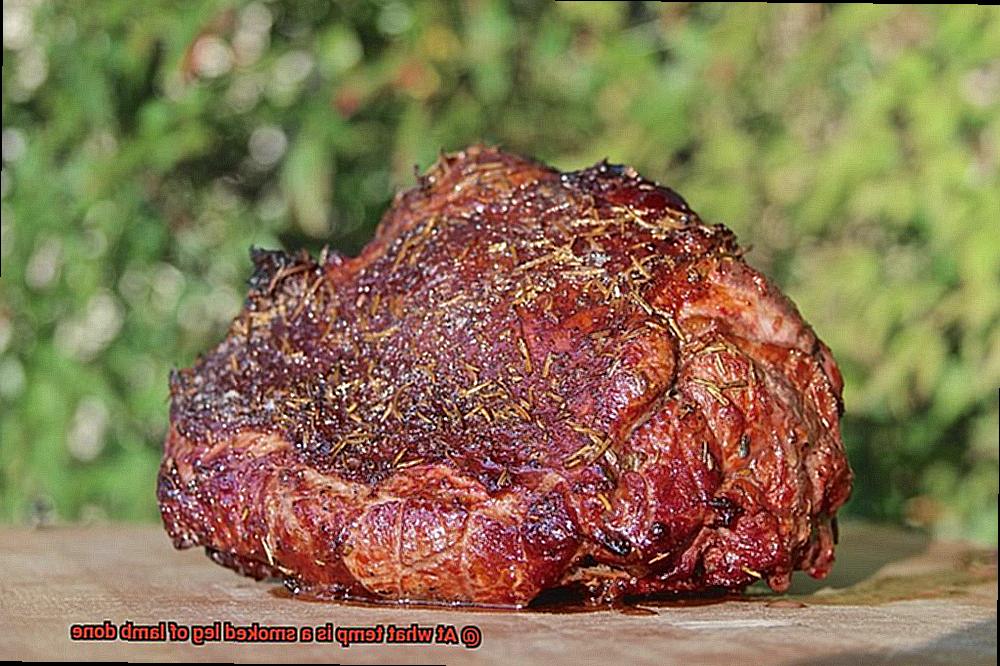
For those who prefer their lamb with a hint of pink in the center, medium-rare is the way to go. Aim for an internal temperature between 135°F (57°C) to 140°F (60°C). This temperature range allows the meat to retain its tenderness while adding visual appeal and enhancing the overall flavor profile.
Medium: The Perfect Balance
If you desire a slightly firmer texture with a touch of pink in the center, aim for an internal temperature between 140°F (60°C) and 145°F (63°C). This achieves a balance between tenderness and firmness, resulting in a beautifully cooked smoked leg of lamb that satisfies both texture preferences.
Well-Done: Fully Cooked Through
For those who prefer their lamb fully cooked without any pinkness remaining, a higher internal temperature is recommended. Aim for an internal temperature of 160°F (71°C) to 170°F (77°C). At this point, the meat will be fully cooked through, maintaining its juiciness while offering a firmer texture.
Monitoring Temperature: The Key to Success
To accurately gauge the internal temperature of your smoked leg of lamb, invest in a reliable meat thermometer. Insert it into the thickest part of the meat, avoiding contact with bones or fat which can give false readings. By using a meat thermometer, you can ensure that your lamb is cooked to perfection, taking the guesswork out of the process.
Resting Period: Sealing in Juices
Once you reach your desired temperature, it is crucial to remove the lamb from the heat source a few degrees below the target temperature. This is because the residual heat will continue to cook the meat. Allow the smoked leg of lamb to rest for 15-20 minutes before slicing. During this time, the temperature will continue to rise slightly, and the juices will redistribute, resulting in a moist and flavorful final product.
Personal Preference Matters
While these temperature guidelines provide a starting point, it is important to remember that personal preference should ultimately dictate how you cook your smoked leg of lamb. Experiment with different temperatures to find your perfect level of doneness. Some may prefer a slightly lower or higher internal temperature depending on their taste preferences.
USDA Recommended Internal Temperature for Different Doneness Levels
If you’re ready to elevate your grilling skills with a succulent and flavorful smoked leg of lamb, understanding the USDA recommended internal temperatures for different doneness levels is crucial. In this article, we’ll explore the mouthwatering possibilities and guide you towards achieving your desired level of doneness. So grab your apron, fire up the grill, and let’s embark on a culinary adventure.
The USDA Guidelines:
When it comes to cooking meat, the United States Department of Agriculture (USDA) provides guidelines on safe internal temperatures. These recommendations ensure both food safety and optimal taste.
Rare – Juicy and Pink:
For those seeking a deep pink center in their smoked leg of lamb, rare is the way to go. Cook until the internal temperature reaches 135°F (57°C). This will result in a tender and juicy texture with a beautiful blush of pink.
Medium-Rare – A Perfect Balance:
If you prefer a warmer pink center that retains its juiciness, aim for medium-rare. Cook the lamb until it reaches an internal temperature of 145°F (63°C). This achieves the perfect balance between tenderness and succulence.
Medium – Slight Pink Center:
For a slight pink center surrounded by a beautifully browned exterior, follow the USDA’s recommendation of cooking your smoked leg of lamb to an internal temperature of 160°F (71°C). This level of doneness offers a harmonious blend of tenderness and flavorful caramelization.
Medium-Well – Just a Hint of Pink:
If you desire a hint of pink in the center while ensuring it is mostly cooked through, aim for medium-well. The recommended internal temperature is 165°F (74°C), delivering a delectable compromise between a well-cooked exterior and a touch of pink.
Well-Done – No Trace of Pink:
For those who enjoy their lamb fully cooked with no trace of pink, the USDA recommends an internal temperature of 170°F (77°C) or higher. Keep in mind that cooking to this level may result in a drier texture, so consider using marinades or basting techniques to retain moisture.
Chefs Recommend Slightly Lower Temperatures for Tenderness and Juiciness
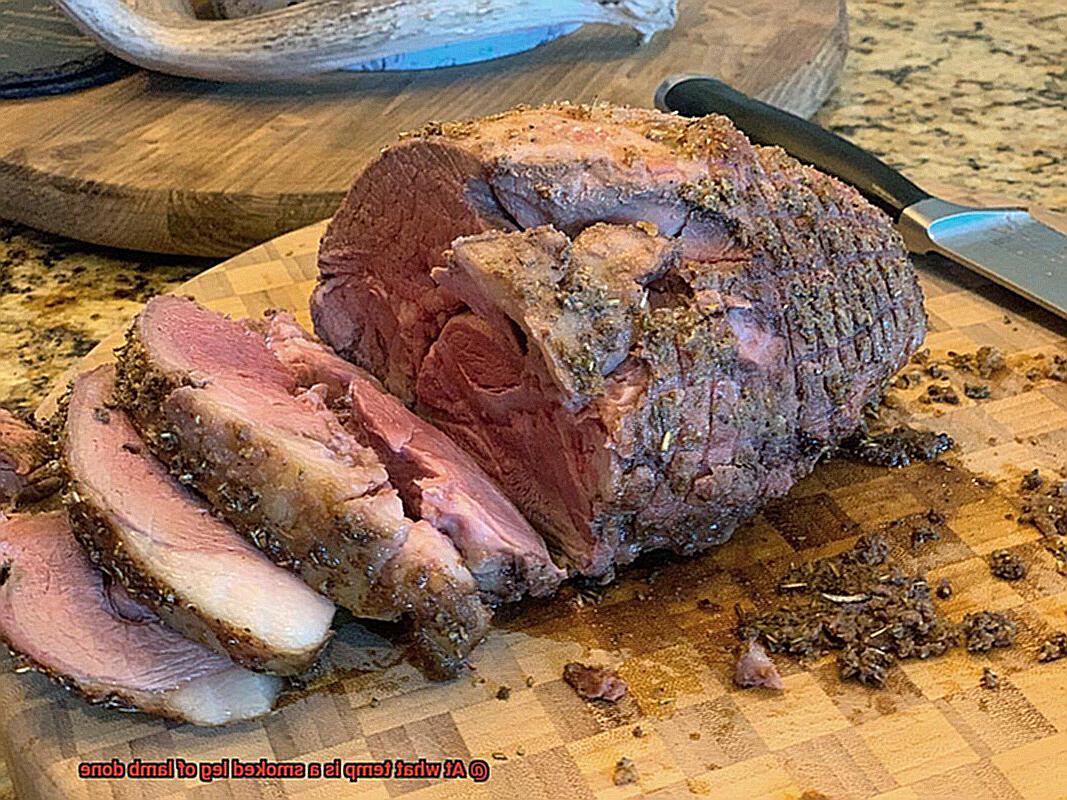
The tantalizing aroma of a perfectly smoked leg of lamb is a sensory experience like no other. The tender meat, bursting with flavor, can transport you to culinary heaven. But what if we told you that achieving that perfect tenderness and juiciness is as simple as lowering the cooking temperature? In this blog post, we delve into the chef’s secret for creating the most succulent smoked leg of lamb and guide you through the ideal cooking temperatures.
Mastering the Science Behind Tenderness and Juiciness:
To elevate your grilling game, understanding the science behind cooking meat is paramount. Lower temperatures work wonders by allowing the connective tissues in lamb to break down slowly, resulting in an unbelievably tender texture. Moreover, cooking at lower temperatures helps retain moisture, preventing the meat from succumbing to dreaded dryness.
Unlocking the Ideal Internal Temperature:
The golden key to achieving that impeccable balance of tenderness and juiciness lies in targeting an internal temperature of around 130 to 135 degrees Fahrenheit for medium-rare perfection. This range ensures that the lamb is cooked through while still maintaining its succulence. Be sure to arm yourself with a trusty meat thermometer for accurate measurements.
Defying Toughness and Dryness:
By embracing slightly lower cooking temperatures, you shield your prized cut of lamb from becoming tough and dry. Avoiding excessive heat allows collagen in the meat to leisurely transform into gelatin, rendering an incomparably tender end product that will have your taste buds rejoicing.
Timing: A Critical Ingredient:
Once you’ve reached your desired internal temperature, remember that carryover cooking continues even after removing the lamb from its heat source. To prevent any dreaded overcooking, exercise restraint and take it off the grill or smoker a few degrees below your target temperature.
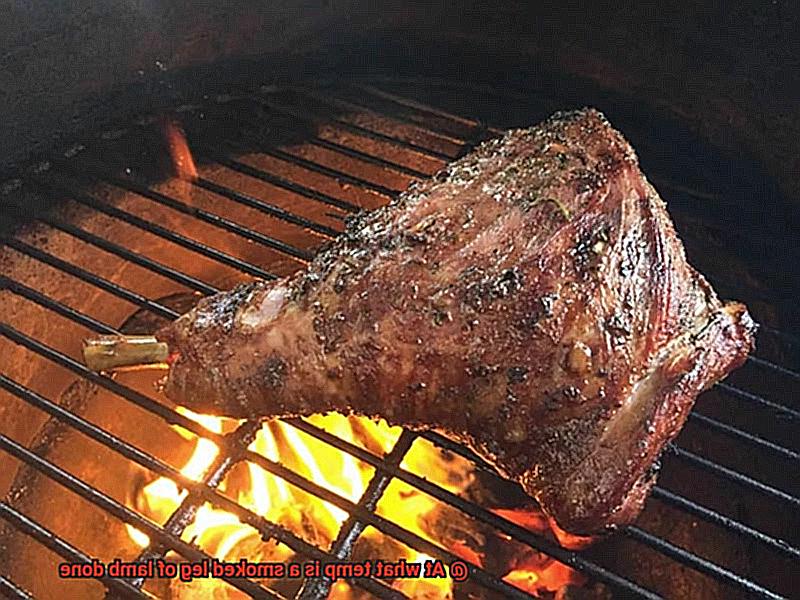
The Power of Patience: Embrace the Resting Period:
Patience is the secret ingredient to achieving ultimate tenderness and juiciness. Allow your smoked leg of lamb to rest for approximately 10 to 15 minutes after cooking. During this crucial resting period, the juices redistribute throughout the meat, resulting in a more flavorful and tender final masterpiece that will leave your guests in awe.
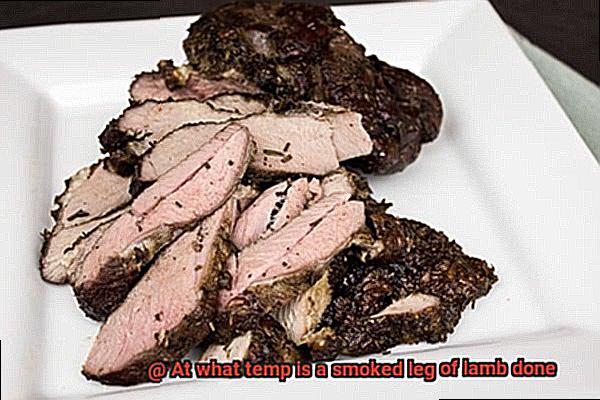
How to Monitor the Internal Temperature of the Lamb
Indulging in a succulent and flavorful smoked leg of lamb is a culinary experience like no other. However, achieving the perfect level of doneness requires expert monitoring of the internal temperature. In this article, we will delve into the significance of internal temperature, explore various types of meat thermometers, and provide you with step-by-step instructions on how to flawlessly monitor the temperature for that divine smoked leg of lamb.
Choosing the Right Thermometer:
To embark on your journey towards gastronomic perfection, selecting a reliable meat thermometer is paramount. The market offers two popular choices: instant-read thermometers and probe thermometers. While instant-read thermometers furnish quick results, probe thermometers grant you the ability to meticulously track temperature fluctuations throughout the cooking process.
Calibrating Your Thermometer:
Before delicately inserting the thermometer into the lamb, it is crucial to calibrate it for utmost precision. Immerse the probe in ice water, ensuring it reads a glacial 32°F (0°C). If this icy measurement eludes your thermometer, fear not. Simply follow the manufacturer’s instructions to adjust or calibrate it accordingly.
Inserting the Probe:
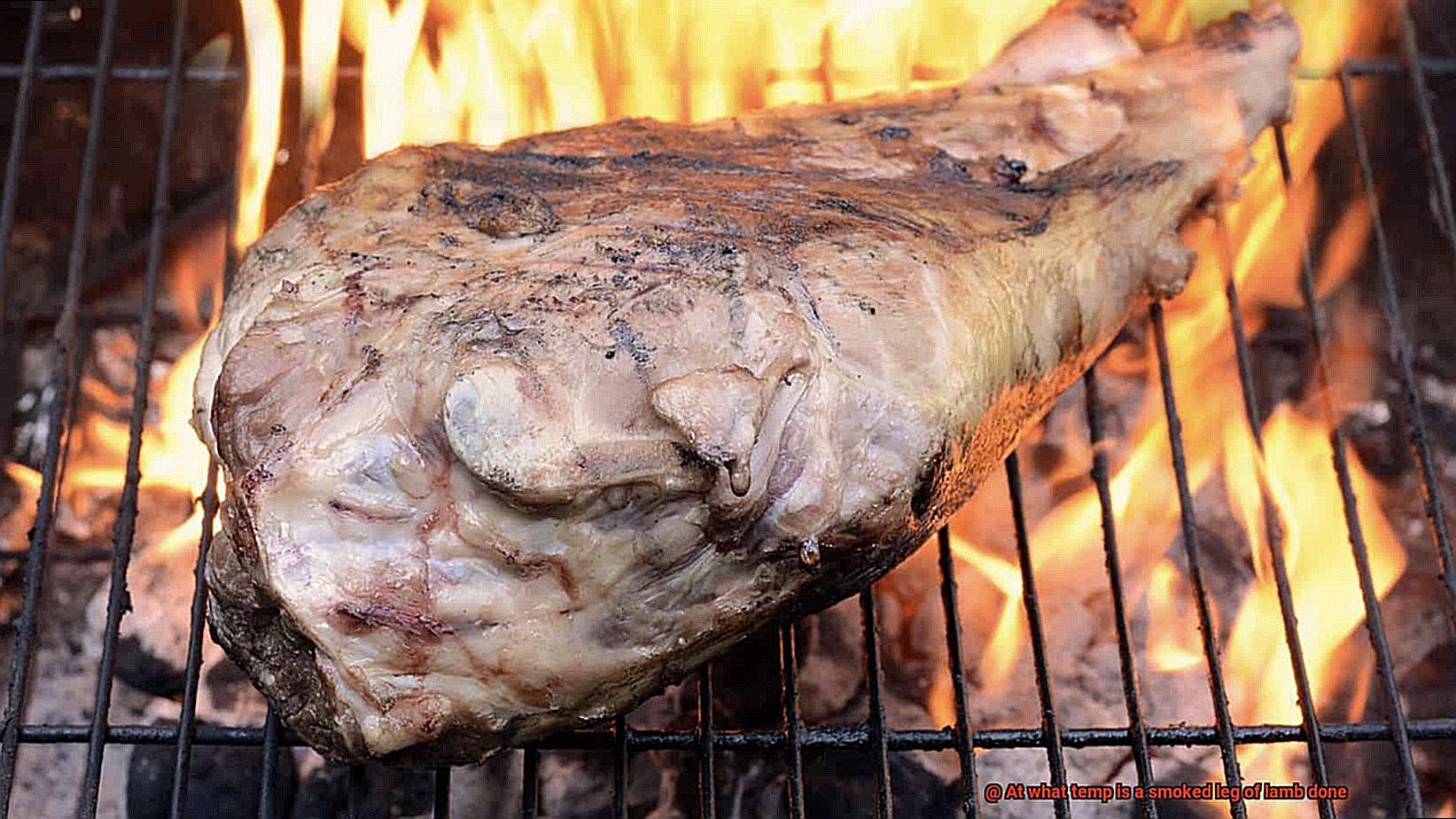
Now comes the moment when precision meets artistry. Gently nestle the thermometer probe into the thickest portion of the lamb, gracefully avoiding any bones or fatty areas. This guarantees an accurate reading of the meat’s internal temperature, leading you closer to culinary nirvana.
Monitoring the Temperature:
During the captivating smoking process, vigilantly check the internal temperature with your trusted thermometer. For those desiring medium-rare lamb, strive for an exquisitely tender 145°F (63°C). However, do not hesitate to alter this temperature based on your preferences. Some culinary virtuosos recommend aiming for a tantalizingly moist 135°F (57°C) for an unparalleled taste sensation.
Resting Period:
After extracting the lamb from its smoky haven, grant it the well-deserved respite it craves. Allow your masterpiece to rest, undisturbed, for a harmonious 10-15 minutes before embarking on your carving journey. This sacred resting period permits the celestial juices to weave their magic within the meat, unveiling a symphony of flavors and tender textures.
Conclusion:
By embracing the guidance of a dependable meat thermometer and closely monitoring the internal temperature of your smoked leg of lamb, you will effortlessly attain perfection with every culinary endeavor. Remember to calibrate your thermometer with precision, skillfully insert the probe, and tailor the target temperature to your discerning palate. Armed with these invaluable techniques, you will astound your guests with an extraordinary smoked leg of lamb that exudes succulence and flavor.
Letting the Lamb Rest After Cooking
Grilling a leg of lamb to perfection requires more than just skillful cooking techniques and the right seasoning. One often overlooked step that can make all the difference is allowing the lamb to rest after it comes off the grill. In this article, we will delve into why letting the lamb rest is crucial for achieving mouthwatering tenderness and flavor.
Juices Redistribution:
When the lamb is put on the grill, the high heat causes the juices within the meat to rush towards the center. Resting allows these precious juices to redistribute throughout the lamb, resulting in a more even distribution of flavors and moisture. This ensures that each bite is juicy and tender, rather than having pockets of dryness.
Temperature Regulation:
During resting, the internal temperature of the lamb continues to rise by a few degrees. This is known as carryover cooking. By pulling the lamb off the grill slightly before it reaches its desired final temperature, you can ensure that it will reach perfection during resting without overcooking it on the grill.
Enhanced Carving:
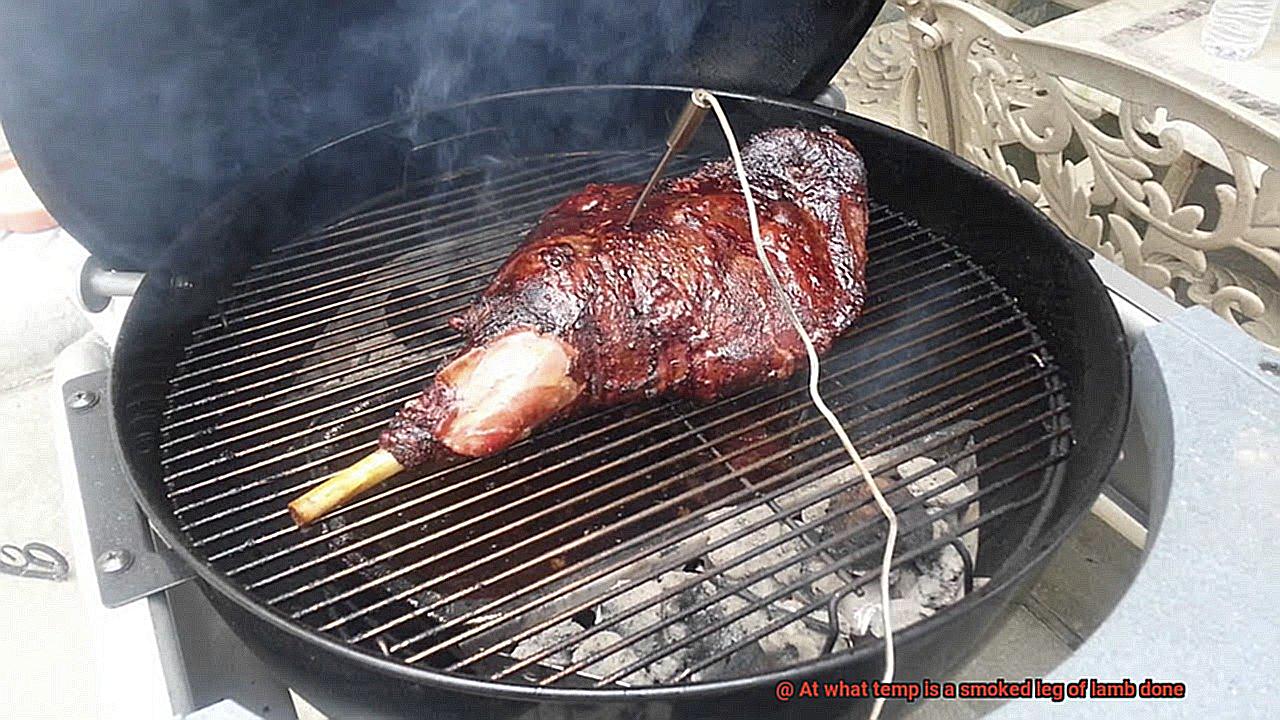
Resting also makes carving much easier. When meat is immediately cut after cooking, the juices are not given enough time to settle back into the muscle fibers. As a result, the lamb can become dry and crumbly when sliced. Allowing it to rest ensures that the meat retains its structure, making for clean and precise slices.
Preparation Time:
While the lamb is resting, you have an opportunity to prepare any accompanying side dishes or sauces. This way, everything will be ready to serve at once, ensuring a well-coordinated and stress-free dining experience.
Furthermore, resting allows for:
- Tenderization: The resting period helps break down tough connective tissue in the meat, resulting in a more tender texture.
- Flavor Infusion: Resting allows the flavors to meld together, enhancing the overall taste of the lamb.
- Heat Distribution: Resting allows the heat to distribute evenly throughout the meat, ensuring that each bite is perfectly cooked.
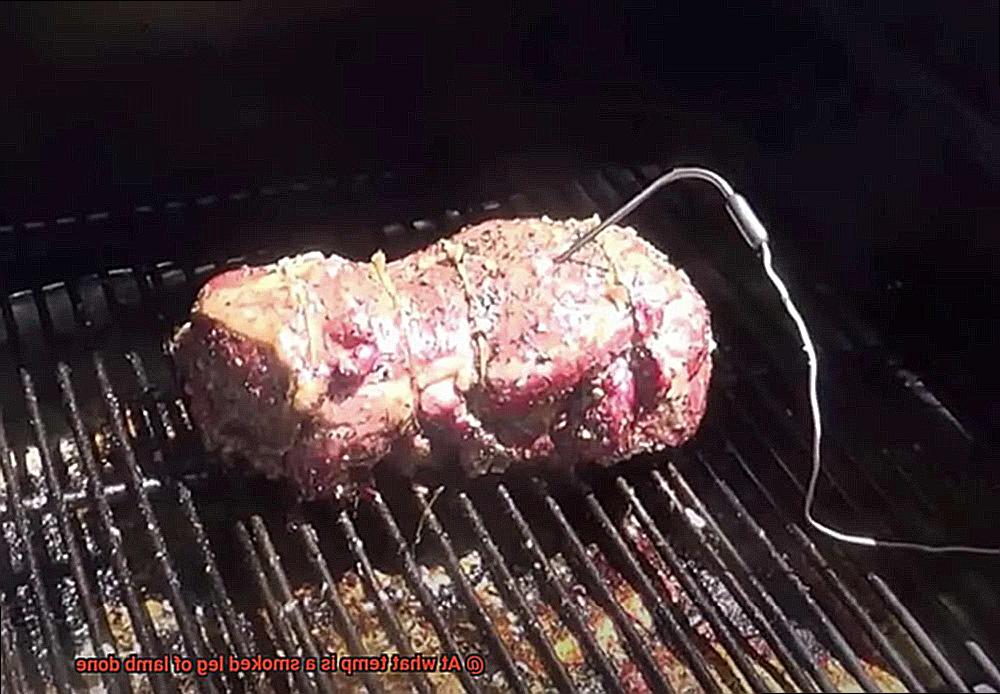
Personal Preference Plays a Significant Role in Determining the Final Internal Temperature
Grilling a smoked leg of lamb is a culinary journey that demands attention to detail and a keen understanding of personal preference. Like a symphony conductor, each individual’s taste and desired internal temperature work together to create a harmonious masterpiece on the grill.
The Maestro of Doneness:
Just as musical genres evoke different emotions, personal preference dictates the level of doneness desired in the lamb. Some grillers crave the succulent tenderness of medium-rare, with a slightly pink center that melts in their mouth. Others prefer a medium doneness, offering a firmer texture that still maintains juiciness. Cultural influences and culinary traditions further shape these preferences, adding cultural depth to the symphony of flavors.
The Tempo of Thickness:
In music, tempo sets the pace, and in grilling, the size and thickness of the leg of lamb determine the final internal temperature. Thicker cuts require a higher internal temperature to ensure even cooking throughout. Utilizing a reliable meat thermometer becomes crucial to achieving precise results and avoiding overcooking or undercooking.
Harmonizing Health and Safety:
While personal preference takes the spotlight, health and safety concerns also play an important role in determining the final internal temperature. By cooking lamb to a minimum internal temperature of 145°F (63°C), grillers eliminate any potential bacteria or parasites that may be present, ensuring both food safety and delectable taste.
Respecting the Rest:
Allowing the lamb to rest after grilling is like letting the symphony settle before its grand finale. This essential step allows the juices to redistribute within the meat, leading to enhanced flavor and tenderness that will delight every palate.
Reheating Leftover Lamb
When it comes to reheating leftover lamb, you want to preserve its flavor, moisture, and tenderness. Don’t worry, I’m here to guide you through the process and ensure that your reheated lamb is just as mouthwatering as when it first hit the grill.
- Grilling: Preheat your grill to medium heat for even heating and to prevent the lamb from drying out. Let the lamb come to room temperature for about 20 minutes before grilling.
- Oil the grates: To prevent sticking, lightly oil the grates with a high smoke point oil like vegetable or canola oil.
- Gentle Reheating: Cook the lamb on the preheated grill for a few minutes on each side until heated through. Keep a close eye to avoid overcooking and drying out the meat.
- Baste with marinade: Use any leftover marinade or sauce to baste the lamb while reheating for extra flavor and moisture.
- Meat thermometer: Ensure the lamb reaches a safe internal temperature of at least 165°F (74°C) by using a meat thermometer.
- Resting time: After reheating, let the lamb rest for a few minutes before slicing or serving. This allows the juices to redistribute, resulting in a more tender and flavorful final product.
- Slice and serve: Now that your reheated lamb is ready, slice it up and serve as is or incorporate it into your favorite dishes. The smoky flavors from the grill will still shine through, delighting your taste buds.
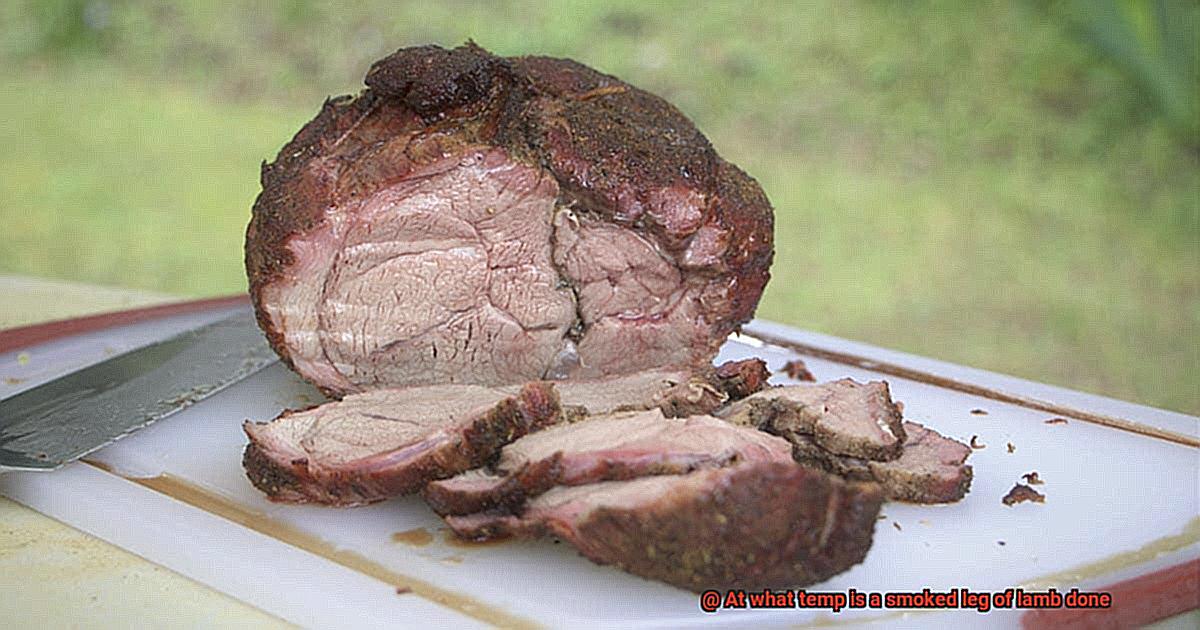
Remember, safety is important when reheating lamb. Follow these steps and techniques to enjoy perfectly reheated lamb every time. Happy grilling.
In addition to grilling, there are other methods you can use to reheat leftover lamb:
- Oven Reheating: Preheat your oven to a low temperature, around 275°F (135°C). Place the lamb in a baking dish, cover it with foil to retain moisture, and heat for 15-30 minutes. Use a meat thermometer to check the internal temperature.
- Stovetop Reheating: Heat a skillet or frying pan over medium heat, add oil or butter, and cook the lamb for a few minutes on each side until heated through.
- Steam Reheating: Simmer water in a pot and place the lamb in a heatproof container or steamer basket over the steam for 10-15 minutes.
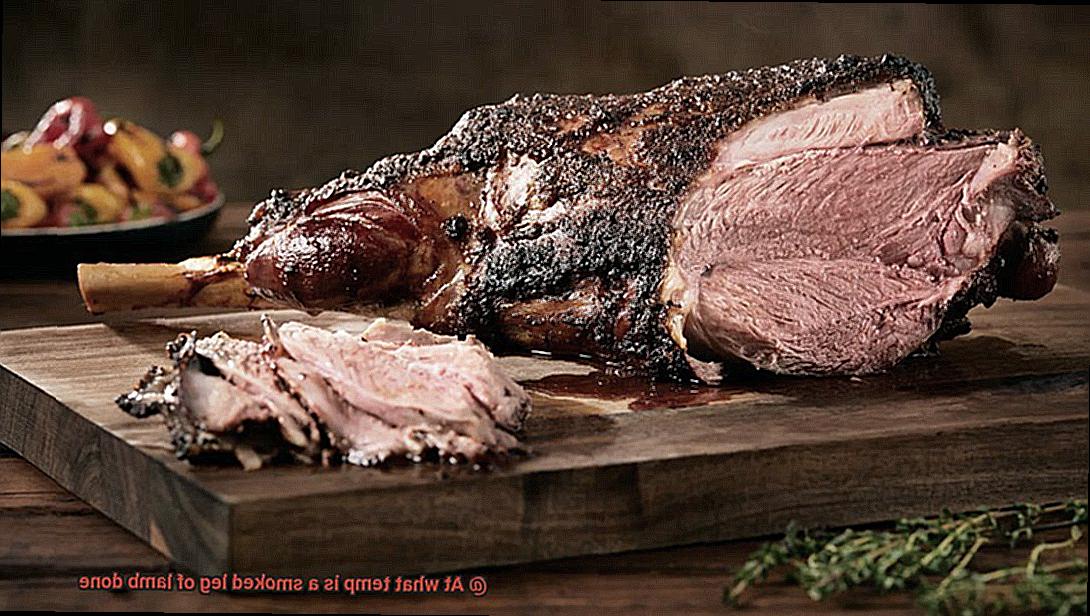
To keep the lamb moist during reheating, you can add a small amount of broth or stock. This will enhance the flavor as well.
Once reheated, enjoy the lamb as is or use it in various dishes like sandwiches, salads, or wraps. Store any remaining reheated lamb properly in the refrigerator and consume it within a few days.
_NOK8jrjRnw” >
Conclusion
When it comes to smoking a leg of lamb, determining the perfect temperature for doneness is crucial. You want that succulent meat to be cooked to perfection, with just the right amount of smoky flavor. So, at what temperature should you aim for? Well, let me enlighten you.
The ideal internal temperature for a smoked leg of lamb is around 135°F (57°C) for medium-rare. This will give you tender and juicy meat that practically melts in your mouth. If you prefer your lamb more on the medium side, aim for an internal temperature of about 145°F (63°C). Keep in mind that these temperatures are just guidelines and can be adjusted based on personal preference.
But how do you ensure accuracy when measuring the temperature? Invest in a reliable meat thermometer – it’s an absolute game-changer. Insert it into the thickest part of the lamb without touching bone or fat, and wait until it gives you an accurate reading.
Remember, patience is key when smoking a leg of lamb. It’s a labor of love that requires time and attention to detail. So light up that smoker, let those aromatic wood chips work their magic, and savor the anticipation as your leg of lamb reaches its perfect level of smoky deliciousness.
In conclusion, achieving the ideal temperature for a smoked leg of lamb is essential for culinary success. With an internal temperature ranging from 135°F (57°C) for medium-rare to 145°F (63°C) for medium, you’ll create a mouthwatering masterpiece worth savoring.

